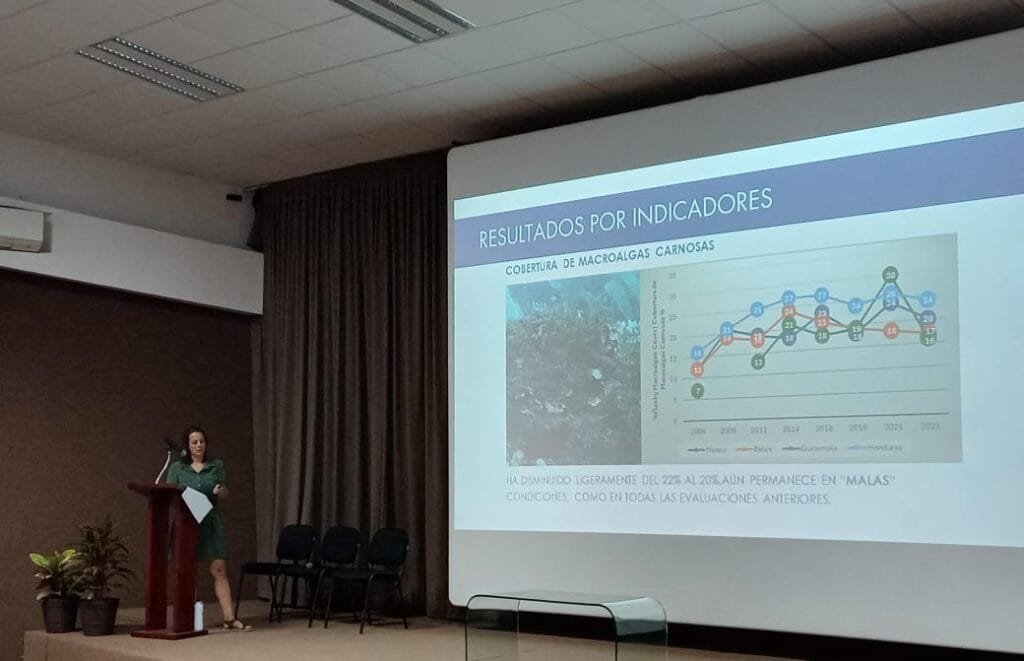Recent data reveals a concerning trend: three out of every four pillar coral colonies are now unhealthy. This information was unveiled in the Mesoamerican Reef Report by the organization Healthy Reefs for Healthy People. While the health of the reef has improved for the first time in five years due to an increase in herbivore fish, the overall condition remains poor. Most of the 286 monitored sites are in bad or critical condition. Sites in regular condition have increased from 20 to 28 percent, and good ones from 5 to 9 percent.
Previously, Cozumel’s marine protected areas had been spared, thanks to robust protection measures, community involvement, and favorable currents that prevent nutrient buildup. However, the recent arrival of hard coral tissue disease and last year’s bleaching have negatively impacted these areas, leading to a decrease in coral cover. Despite this, the number of fish remains high, a trend also observed in Banco Chinchorro.

Disease outbreaks and bleaching have reduced coral cover from 19 to 17 percent, with continued mortality observed during monitoring. Various environmental factors contribute to these issues, including water quality, climate change, and increased sea surface temperatures. These factors contribute to the growth of seaweed, which further degrades water quality and creates a harmful cycle that can harm both reefs and humans.
However, there is some good news. Commercial fish biomass has increased by 40 percent due to improved management efforts, and herbivore fish biomass has increased by 30 percent. Unfortunately, nine out of ten parrotfish are less than 30 centimeters in length and unable to effectively control algae populations, which negatively impact reef life.
Last year, the reef experienced its worst bleaching event, affecting 40 percent of corals and causing significant mortality in iconic sites. Recommendations made a decade ago have yet to be implemented, making action more critical than ever.
In response, a call to action has been issued. This includes key points such as investing in tertiary wastewater treatment with effective management models, determining tourist water capacities in coastal areas, expanding monitoring efforts, reducing agricultural runoff through sustainable practices, enforcing national regulations, aligning with international water quality agreements, and increasing awareness and citizen participation in the implementation of solutions.
Discover more from Riviera Maya News & Events
Subscribe to get the latest posts sent to your email.
